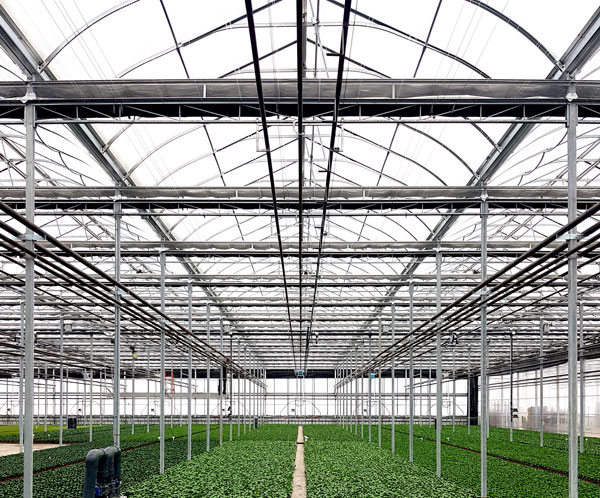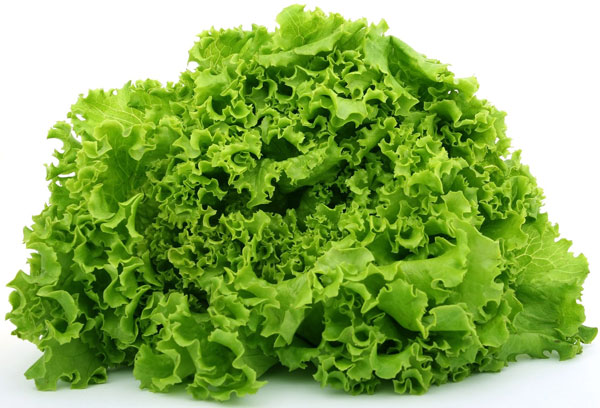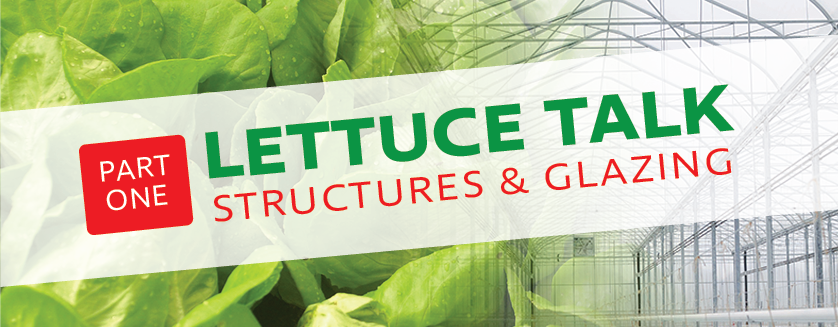Greenhouses and Glazing for Better Lettuce Growing
There is no question that the production of greenhouse grown lettuce and greens is evolving as the opportunities and demand expand and mature.
Determining the right greenhouse glazing for growing leafy greens, including the cultivation of lettuce, is dependent on a few factors including climate, budget, and whether this is an expansion or a new build. From small scale to large scale, greenhouses provide an ideal environment for greenhouse grown lettuce and other produce. In this segment, we will look at the style of the structure and glazing options GGS can offer to get the most for your budget in the cultivation of lettuce.
Freestanding Greenhouses
A GGS Double Poly Freestanding Greenhouse, an excellent choice for glazing with greenhouse-specific materials, is ideal for local markets, organic growers, and specialty market growers, focusing on soil-grown or hydroponic-grown greens, including greenhouse-grown lettuce. The most popular width is 30’ wide (other widths are available, for consultation call or connect to us through our contact form). Length is incremental in 4 foot or 6 foot sections, facilitating the cultivation of lettuce and other crops according to your specific crop plan. If you are hanging lights to provide supplemental lighting, this can easily be supported by single tube crossties, making the freestanding greenhouse easily adaptable for your requirements. Freestanding Greenhouses also offer several ventilation options, including forced air fan venting or natural ventilation with swinging side vents and/or roll up sides, essential for the effective greenhouse glazing and environmental control. These houses are strong, built to last, and represent an economical, cost-effective choice for smaller and entry-level commercial greenhouse operations.
Gutter Connected and Widespan Greenhouses
The most popular single peak width of most GGS Gutter Connected Greenhouses, which are often utilized for the hydroponic cultivation of lettuce and other hydroponically grown greens on a larger scale, are 21’ or 24’ from gutter to gutter. To optimize space and hydroponic growing systems, growers often choose to go with a Widespan structure. This structure, similar in appearance to the regular bay but with reinforced crossties used to eliminate a row of posts, supports the efficient use of space for greenhouse-grown lettuce. The bay has 2 peaks, and the standard widths include 32’, 36’, 42’, and 48’ wide. For height, we recommend 14’ or 16’ under the gutter to provide ample room for adequate air circulation and flow, hanging supplemental lighting, and natural light distribution, all vital for the optimal growth of greenhouse-grown crops. Made with hot-dipped galvanized steel, all GGS commercial greenhouse structures meet or surpass local agricultural building codes and take into consideration local weather conditions for strength and durability.
Greenhouse Glazing for Cultivation of Lettuce
Successful greenhouse grown lettuce production facilities utilize greenhouse glazing materials such as curved glass, polycarbonate, and double poly options. Each one has its benefits, making them premier choices for the cultivation of lettuce in growing environments.
Nothing gives you more light penetration for the cultivation of lettuce than a curved glass greenhouse. Lettuce thrives in high light environments, so choosing a GGS Curved Glass greenhouse for your lettuce ensures you will maximize the value of natural sunlight. The GGS Curved Glass gothic design has proven to give the extra strength needed to take the worry out of winter snow loads. This is also the driest greenhouse for growers who need to control higher humidity levels. The expert-designed glazing bars have condensation channels built into each extrusion so water droplets on the roof are collected and directed outside the greenhouse. Remember, with glass, the higher the intensity of summer sunlight, meaning shade curtains are recommended during the middle of the day to prevent stress and tip burn on the leaves of the lettuce crop.
Next to Curved Glass on the roof, 8mm PCSS is the choice of many professional growers for the cultivation of lettuce. What PCSS (Polycarbonate Structured Sheets) give up in light transmission they make up for in heat retention, and the light levels for clear 8mm PCSS are still above 80%. Additionally, in high hail zones, PCSS tends to be the preferred choice because the flexibility of the polycarbonate material allows for enough give to reduce the risk of hail damage to lettuce.
The Low Profile Glass or Venlo Greenhouse design is another option for greenhouse grown lettuce, but for natural ventilation, the Curved Glass and PCSS roofs provide more air exchanges. Low profile greenhouses also come in widespan widths for greenhouse facilities with ponds and large hydroponic systems for the cultivation of lettuce. They are not recommended in areas with hail.
Double poly is another option for covering your greenhouse roof in the cultivation of lettuce. Double poly is economical and effective for providing some heat retention. Typically, poly roofs need to be recovered every 4 years, though growers with high light requirements for their lettuce may choose to replace their roof plastic sooner. This decision depends on your location, lettuce crop needs, and the amount of usage of supplemental grow lights. For growers capitalizing on natural ventilation, the double poly greenhouse offers many options for greenhouse grown lettuce.

Ventilation in Greenhouse Glazing
Every grower understands the crucial role of ventilation in greenhouse glazing for the health of your crop. Leafy greens, such as greenhouse-grown lettuce, are a cool-weather crop, making ventilation especially important to ensure that temperatures within the greenhouse can be maintained in the desired range for the cultivation of lettuce. The decision between natural ventilation or forced air will significantly be influenced by the geographic region where the greenhouse is built, considering the specific needs of greenhouse-grown lettuce.
GGS, with expertise in greenhouse ventilation and greenhouse glazing, can assist in guiding you through all options for the cultivation of lettuce, considering your location, crop needs, and the integration of all systems that constitute the total greenhouse environment. It is by integrating these various systems, including those for the cultivation of lettuce under greenhouse glazing, into your design that we create the ideal controlled environment for your crop.
Discover our ventilation options here tailored for greenhouse-grown lettuce and other crops.
Each GGS structure not only provides excellent yield for crops like greenhouse-grown lettuce but also showcases unique differences in how the grower can best manage the crop for optimal cultivation of lettuce. Having worked with growers for over forty years, GGS has been dedicated to designing and manufacturing greenhouses for success. Contact us today to consult with our experts about greenhouse glazing and learn more about your greenhouse options for cultivating lettuce.
The greenhouse environment, including greenhouse glazing, and the water management of a lettuce crop are pivotal to achieving a quality product. Climate, water, and light are important factors we will discuss in our next blog, focusing on the cultivation of lettuce in a greenhouse setting.
